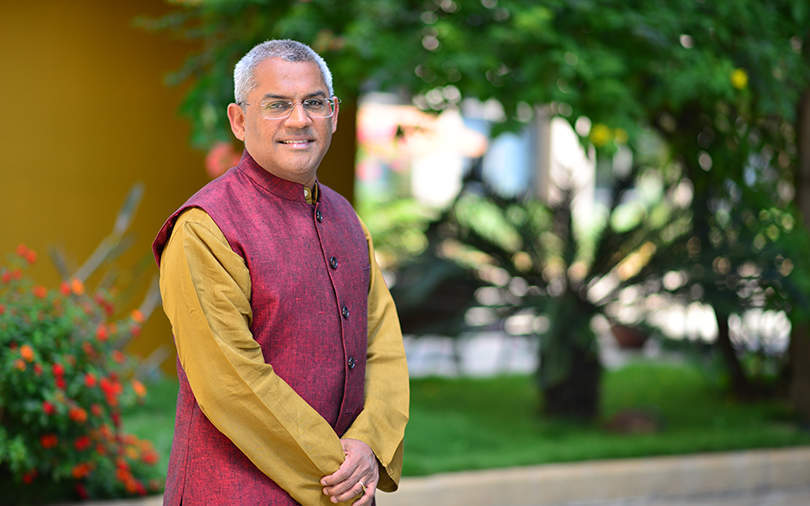
Column: The Circa Problem


One of the biggest learnings in my past seven years as an entrepreneur-turned-VC is that startup founders must learn to adapt and deal with the #CircaProblem. I, for one, believe that this is one of the biggest challenges hidden in plain sight from founders, and one of the biggest value adds a VC or independent board member or advisors can bring to the founders - by virtue of being close enough but far enough!
So what is the #CircaProblem?
Most startups in their early days start with a dream and a vision for the world. Yet as founders aim to build the right product and distribute it to customer(s), they have to deal with a variety of problems, some of which are truly market challenges and others are related to the product, market and customer readiness ‘at that point in time’.

After all, during the early 3-4 years, their success is defined by hitting milestones that are both aggressive and achievable. While predictability of business expansion is seen as a good thing, one also runs the risk of trying to be too methodical in one’s approach, and trying too hard to achieve the proverbial rinse-and-repeat mindset.
Founders often take conclusions from the initial successes, and more importantly from the initial false starts, to arrive at an equilibrium that gives them predictable adoption. Additionally gurus who have burnt their fingers echo a lot of advice. For example, I recall a famous statement by a well known startup guru in 2015. He stated that “In the US, the small businesses are OK being treated like consumers, but in India they expect to be treated as an enterprise”. While he may have right when you started out in 2015, assuming that this is still the case in 2020 could be costly.
In a dynamic market like India, one which is experiencing smartphone and Internet penetration for the first time and evolving at breakneck speed, many of these step-function changes may be missed by startups that may be as little as 2-3 years old.

Indeed, as we approach 2020, even a company started in 2015 may have initially attempted a certain go- -to-market strategy (eg. online or channel sales), realized it didn’t work, and assumed that it wasn’t going to work. Such a company would have invested heavily in direct, feet-on-the-street sales, distribution, onboarding and support muscle -- one that is giving them predictable adoption, growth and perhaps revenues.
However a younger startup, one founded in 2018, may have found that the market has started adopting an online only, self service based go-to-market approach, perhaps with a freemium business model, focusing on referrals and virality, perhaps a highly scalable model of training videos, and many more of the digital distribution techniques.
If Ola/Uber drivers are creating Telegram groups because of the limitations of WhatsApp, I’m sure they are capable of downloading your consumer app and trying it out. And yet, we quickly forget that in as recent as 2015, most of them barely knew how to read Maps.

Successful companies run the risk of a new player coming in with a completely new and highly scalable distribution strategy that may have failed as recently as 2017 but that may be right in 2020. Timing after all is critical!
While this is true for companies of all ages, the larger ones can survive a few hits and perhaps make some clever M&A. In digital businesses, this sometimes happens so swiftly, that the incumbent may not realize what is happening. And before they do, it’s too late.
What can teenage startups do to not be blindsided by younger and more agile competitors?

The most important thing is to ensure that you don’t mock younger startups, especially competitors, most of them are started by smart people.
One must have tremendous respect for anyone trying something new, especially if it’s solving a major pain point that you perhaps tried unsuccessfully, and have secretly hoped would go away. It’s very easy and comforting to say “we tried that and it didn’t work”. But coming to the conclusion that it won’t work for the new guy is exactly the arrogance the new guy is counting on.
Another approach I’ve seen a few companies adopt is to use disruption events such as hackathons as ways to question the status quo, and try and rapidly experiment with step-function changes instead of incremental changes. Most will not succeed (at least not immediately), but often there is a gem that surfaces.

Even in our role as VC’s, one question we constantly ask ourselves is, “what has changed now compared to when we last saw something and passed on it, especially if it was a few years ago?”
The market evolves and customers are hungry for anything that solves their problems and often willing to learn new ways to solve the problem. And if you are a founder, I urge you to frequently keep reflecting on your business and the macro-conditions. Better still, keep experimenting with ways to disrupt yourself.
Always ask yourself the question, if we were starting off today, what would we do differently. Has anyone else tried doing so -- are there reasons to believe what didn't work then will work now?

Sanjay Sawamy is founder and managing partner of Bengaluru based venture capital firm Prime Venture Partners. The views in this article are his own.

Sanjay Swamy
Sanjay Swamy is managing partner at fintech and financial-services focused venture capital fund Prime Venture Partners. The views in this article are his own.
